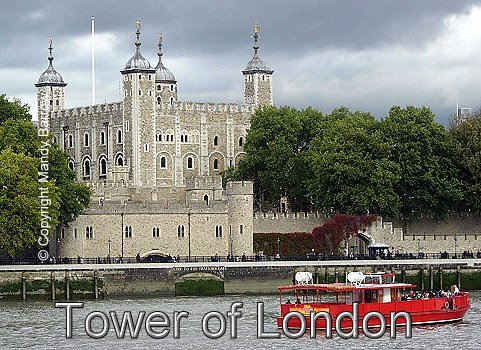by
|
The History of London
Medieval London (1066 – 1485) |
|||||||||||||||||||||
When the Saxon King Edward the Confessor died in 1066, he left no heirs, kicking off a three way battle for the English crown. You can read about it here. William, Duke of Nor, won the fight for the crown and marched on from the Battle of Hastings to London. He was crowned king at Westminster Abbey on 25 December 1066. William built three military camps on London, to keep control of the city. One eventually became known as the Tower of London. William and his successor built the White Tower.
A ring of monastries, nunneries, priories and hospitals grew up on the outside of the old Roman city, and in 1176 the first stone bridge was built across the Thames. After a fire in 1087, a new cathedral, St Pauls, was built. William II started on the great hall at the Palace of Westminster. Around 1190, london had its first mayor, Henry Fitz Aylwin. The first Guidhall was built in 1127, on the ruins of the Roman amphitheatre. The Guidhall seen today, on the same site, dates from 1411. Lead pipes were used to bring spring water into the city from 5 km away – one of the first water systems in medieval Europe. New inhabitants from Europe set up businesses in London. These included many Jews who set up business in the Cheapside area, and Flemish and French cloth workers who helped make London a centre for the Europeam wool trade. Craft Guilds (Known as the Livery Companies today) The weavers guild was set up in 1130. Within 50 years there were 20 guilds, including goldsmiths, pepperers (the spice trade), cloth workers and butchers. 13th Century London By the 13th century London had a population of 80,000, making it one of the largest cities in Europe. London was home to Englands first parliament, as well as the law courts and the Exchequer that organised the royal finances. The Church was London’s biggest landowner and its biggest employer. 14th Century London London experience one disaster after another with the most deadly being the Black Death, brought over by rats on ships from Europe. This bubonic plague wiped out half of all Londerners in just 18 months, and it took 150 years for the population to recover.
|
|||||||||||||||||||||
 © Copyright – please read © Copyright – please read All the materials on these pages are free for homework and classroom use only. You may not redistribute, sell or place the content of this page on any other website or blog without written permission from the . |
© Copyright 2013
is the creator of the Woodlands Resources section of the Woodlands Junior website.
The two websites projectbritain.com and primaryhomeworkhelp.co.uk are the new homes for the Woodlands Resources.
left Woodlands in 2003 to work in Kent schools as an ICT Consulatant.
She now teaches computers at The Granville School and St. John’s Primary School in Sevenoaks Kent.
Woodlands Junior Homework Help new website





